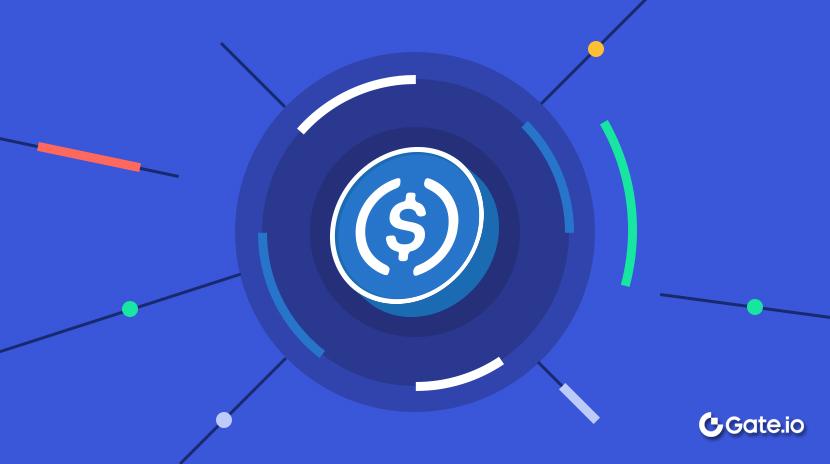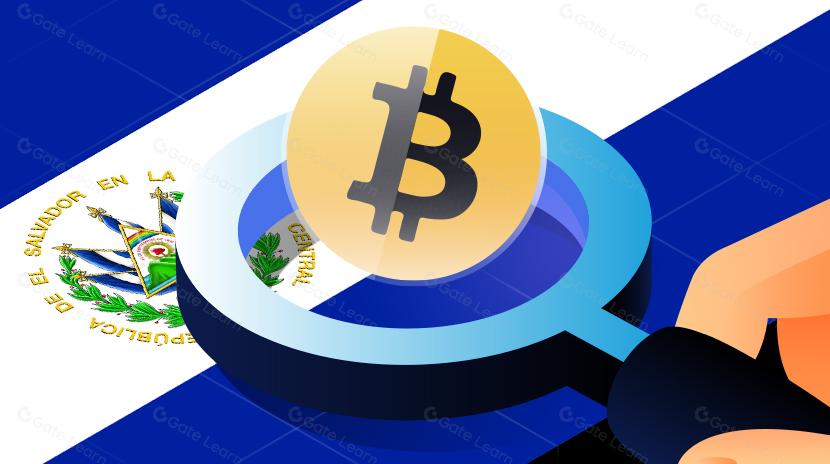Gambaran Lengkap 15 Pertanyaan dan Jawaban tentang Rancangan Undang-Undang Uang Kripto Stabil Terbaru di AS
Teruskan Judul Asli 'Cepat Lihat! Gambaran Lengkap 15 Pertanyaan dan Jawaban tentang Rancangan Undang-Undang Stablecoin Terbaru AS'
Siapa yang dapat mengeluarkan stablecoin pembayaran? Apa persyaratan inti untuk mengeluarkannya? Apakah ada pembatasan pada stablecoin asing yang masuk ke Amerika Serikat?
Minggu ini, Bryan Steil, Ketua Subkomite Aset Digital AS, dan French Hill, Ketua Komite Jasa Keuangan DPR, secara resmi memperkenalkan rancangan STABLE Act tahun 2025, yang menguraikan kerangka kerja untuk mengeluarkan dan mengoperasikan stablecoin pembayaran di Amerika Serikat. French Hill mencatat, “RUU ini adalah hasil dari bulan-bulanan kolaborasi antara anggota Kongres dan pemangku kepentingan kunci, baik selama sesi ini maupun yang lalu.”
Artikel ini memecah tagihan melalui 15 pertanyaan dan jawaban yang sering diajukan, membantu pembaca memahami sepenuhnya tujuan, kewajiban penerbit dan kustodian, serta implikasi regulasi yang lebih luas.
Siapa yang Mengusulkan RUU tersebut? Apa Tujuannya?
Siapa yang memperkenalkan RUU tersebut?
Draf RUU, juga dikenal sebagai "Transparansi dan Akuntabilitas Stablecoin untuk Undang-Undang Ekonomi Tingkat yang Lebih Baik tahun 2025", diperkenalkan oleh Perwakilan Bryan Steil dan French Hill. Bryan Steil adalah Ketua Komite Administrasi DPR dan juga menjabat sebagai Ketua Subkomite Aset Digital dalam Komite Jasa Keuangan DPR. French Hill adalah Ketua Komite Jasa Keuangan DPR yang baru.
Jenis stablecoin apa yang secara utama diatur oleh tagihan?
RUU bertujuan untuk membentuk kerangka kerja regulasi untuk memastikan transparansi dan akuntabilitas untuk stablecoin pembayaran, mengatur penerbitan dan peredaran mereka, melindungi konsumen, menjaga stabilitas keuangan, mencegah aktivitas keuangan yang melanggar hukum, dan mendorong penggunaan stablecoin dalam 'ekonomi buku besar yang lebih baik'.
Apa itu Payment Stablecoin?
Menurut undang-undang, stablecoin pembayaran didefinisikan sebagai:
- Aset digital yang dimaksudkan untuk digunakan sebagai alat pembayaran atau penyelesaian.
- Dinominasikan dalam mata uang nasional.
- Penerbit wajib menebus, membeli kembali, atau menukarkan stablecoin pada nilai uang tetap.
- Ini tidak dianggap sebagai mata uang nasional, juga bukan keamanan yang diterbitkan oleh perusahaan investasi.
Penerbitan Stablecoin
Siapa yang dapat disetujui untuk mengeluarkan stablecoin pembayaran?
Hanya Penerbit Koin Stabil Pembayaran yang Diizinkan diperbolehkan untuk menerbitkan stablecoin. Ini termasuk:
- Anak perusahaan lembaga penyimpanan yang diasuransikan yang telah disetujui
- Penerbit stablecoin pembayaran non-bank yang memiliki lisensi federal
- Penerbit stablecoin pembayaran berlisensi negara
Apa persyaratan inti untuk mengeluarkan stablecoin pembayaran?
- Persyaratan Cadangan: Penerbit harus menyimpan aset cadangan tidak kurang dari 100% dari jumlah yang beredar dari stablecoin (dukungan 1:1). Aset yang memenuhi syarat termasuk uang tunai dolar AS, deposito bank Federal Reserve, deposito on call dengan lembaga penyimpanan yang diasuransikan, surat berharga Departemen Keuangan AS jangka pendek (jatuh tempo dalam 93 hari), beberapa perjanjian repurchase semalam, dan dana pasar uang yang diinvestasikan dalam aset-aset tersebut di atas.
- Kebijakan Penebusan: Harus secara terbuka mengungkapkan syarat-syarat penebusan dan menetapkan prosedur untuk memastikan penebusan tepat waktu.
- Transparansi: Laporan bulanan mengenai komposisi cadangan harus dipublikasikan, ditinjau oleh sebuah firma akuntansi publik independen yang terdaftar, dan disertifikasi secara tertulis oleh baik CEO maupun CFO.
- Konsekuensi dari Sertifikasi Palsu:
Pelanggaran dengan sengaja: Hukuman penjara hingga 20 tahun + denda $5 juta
Pelanggaran yang tidak disengaja: Hingga 10 tahun penjara + denda $1 juta
- Manajemen Modal dan Risiko: Harus mematuhi standar manajemen modal, likuiditas, dan risiko (termasuk operasional, kepatuhan, TI, dan risiko keamanan cyber) yang ditetapkan oleh regulator stablecoin federal utama.
- Pembatasan Bisnis: Kegiatan terutama terbatas pada penerbitan dan penebusan stablecoin, pengelolaan cadangan, dan penyediaan layanan penitipan atau fungsi dukungan langsung.
- Tidak Ada Pembayaran Bunga: Penerbit dilarang membayar bunga atau hasil kepada pemegang stablecoin.
Penjagaan
Apa persyaratan kualifikasi untuk penjaga amanah?
Hanya lembaga keuangan (seperti bank atau perusahaan trust) yang diatur secara federal atau negara dan memenuhi standar yang relevan yang dapat menyediakan layanan asuh.
Aturan penitipan apa yang termasuk dalam tagihan?
- Aset klien harus disegregasikan dan tidak boleh dicampuradukkan dengan dana institusi sendiri.
- Aset pelanggan harus diprioritaskan daripada kreditur penerbit.
- Aset klien tidak dapat dicatat dalam neraca milik kustodian sendiri.
- Penjaga harus secara teratur mengirimkan dokumentasi yang menjelaskan prosedur operasional mereka kepada regulator.
Regulasi dan Kepatuhan
Siapa yang bertanggung jawab mengatur penerbit stablecoin?
Stablecoin pembayaran federal utama regulator termasuk Kantor Kontrol Mata Uang (OCC), Dewan Cadangan Federal, Lembaga Asuransi Simpanan Federal (FDIC), dan Administrasi Kredit Persatuan Nasional (NCUA). Secara khusus:
- Untuk lembaga deposito yang diasuransikan (bukan koperasi kredit) dan anak perusahaannya: badan perbankan federal yang sesuai
- Untuk koperasi kredit yang diasuransikan dan anak perusahaannya: NCUA
- Untuk penerbit stablecoin pembayaran non-bank yang dilisensikan secara federal: OCC
Bagaimana negara-negara individual dapat menetapkan kerangka regulasi stablecoin mereka sendiri?
Penerbit stablecoin yang memenuhi syarat negara hanya boleh menerbitkan stablecoin pembayaran di bawah pengawasan otoritas regulasi stablecoin negara masing-masing. Setiap regulator negara dapat mengajukan sertifikasi ke Departemen Keuangan AS, menunjukkan bahwa kerangka regulasi mereka memenuhi atau melebihi standar federal.
Apa persyaratan bagi penerbit stablecoin asing?
RUU tersebut memungkinkan stablecoin pembayaran yang diterbitkan asing beredar di AS, namun hanya dengan syarat ketat:
- Regim regulasi penerbit harus sebanding dengan yang di Amerika Serikat
- Penerbit harus setuju dengan pengawasan regulasi AS, termasuk persyaratan pelaporan dan pemeriksaan.
Menteri Keuangan bertanggung jawab untuk mengevaluasi dan mengkoordinasikan perjanjian internasional, dan harus menerbitkan serta memperbarui daftar negara yang dianggap memenuhi syarat.
- Jika penerbitnya adalah entitas non-bank, kelayakan ditentukan oleh OCC
- Jika penerbitnya adalah bank atau anak perusahaan bank, kelayakan ditentukan oleh Federal Reserve
Apa hukuman untuk melanggar Undang-Undang STABLE?
Jika penerbit stablecoin pembayaran - baik penerbit berlisensi, pihak terafiliasi, atau penerbit tidak sah - melanggar ketentuan Undang-Undang STABLE tahun 2025, mereka dapat menghadapi berbagai sanksi berat yang diberlakukan oleh regulator federal atau negara bagian:
1. Tindakan Penegakan Regulasi
- Pencabutan atau Pembekuan Lisensi: Jika regulator koin stabil pembayaran federal utama menentukan bahwa penerbit berlisensi atau pihak terafiliasinya telah melakukan pelanggaran serius terhadap Undang-Undang, regulator tersebut dapat melarang penerbit untuk terus menerbitkan koin stabil pembayaran.
- Perintah Menghentikan dan Menarik: Jika regulator dengan alasan yang wajar percaya bahwa penerbit atau pihak terafiliasi melanggar, telah melanggar, atau bermaksud melanggar Undang-Undang, peraturan yang berlaku, perjanjian formal, atau syarat tertulis, mereka dapat mengeluarkan perintah yang mengharuskan penerbit untuk menghentikan perilaku yang melanggar dan mengambil tindakan korektif.
- Penghapusan dan Larangan dari Partisipasi: Regulator utama dapat mengeluarkan pihak terafiliasi atau melarang mereka untuk berpartisipasi dalam urusan penerbit atau penerbit berlisensi lainnya—jika pihak tersebut terbukti secara langsung atau tidak langsung melanggar Undang-Undang, aturan terkait, atau hukum anti pencucian uang di bawah Kode AS.
2.Denda Sipil
- Penerbitan Tanpa Lisensi: Setiap entitas yang menerbitkan stablecoin pembayaran tanpa persetujuan—beserta pihak terkait yang ikut serta dengan sengaja—dapat menghadapi sanksi perdata hingga $100.000 per hari, untuk setiap hari stablecoin tetap belum diselesaikan.
- Pelanggaran Tingkat 1: Jika penerbit berlisensi atau afiliasinya secara substansial melanggar Undang-Undang, peraturannya, atau perintah atau kesepakatan regulasi apa pun, mereka dapat dikenai denda hingga $100,000 per hari.
Pelanggaran Tingkat 2: Jika pelanggaran tersebut disengaja, denda tambahan hingga $100.000 per hari dapat dikenakan di atas denda Tingkat 1.
3. Hukuman Pidana
Sertifikasi Cadangan Palsu: Jika CEO atau CFO penerbit mengirimkan laporan cadangan bulanan yang mengandung informasi palsu materiil, berlaku hal berikut:
- Jika mereka dengan sengaja mengirimkan laporan palsu: hingga $1 juta denda, 10 tahun penjara, atau keduanya
- Jika laporan palsu sengaja dipalsukan: hingga $5 juta denda, 20 tahun penjara, atau keduanya
Klaim Asuransi Palsu: Jika penerbit dengan tidak benar mengklaim bahwa sebuah stablecoin dijamin oleh pemerintah AS atau diasuransikan oleh FDIC atau NCUA, maka akan dituntut sesuai hukum federal yang ada.
Denda Sipil:
- Penerbitan tanpa izin atau pelanggaran pembatasan penjualan: hingga $100,000 per hari.
- Pelanggaran yang signifikan: hingga $100,000 per hari.
- Pelanggaran yang disengaja: denda tambahan hingga $100,000 per hari.
Sanksi pidana: Sertifikasi cadangan palsu: Hingga $5 juta denda dan hingga 20 tahun penjara.
Tindakan Regulasi:
- Pencabutan atau pembatalan izin penerbitan
- Penerbitan perintah berhenti dan larang
- Penghapusan orang yang berafiliasi
Denda Klaim Menyesatkan: Pernyataan asuransi palsu akan dituntut sesuai hukum federal yang berlaku.
Tindakan Sementara/Darurat: Perintah penghentian sementara dan larangan mungkin dikeluarkan dalam situasi darurat.
Pertanyaan Lainnya
Apakah pembayaran stablecoin dianggap sebagai surat berharga?
RUU tersebut secara tegas mengecualikan stablecoin pembayaran dari definisi “surat berharga.”
Bagaimana jaminan interoperabilitas stablecoin akan dipastikan?
Regulator federal akan mengevaluasi, dan mungkin mengembangkan, standar untuk mempromosikan interoperabilitas dan kompatibilitas stablecoin pembayaran - mungkin bekerja sama dengan lembaga seperti Institut Standar dan Teknologi Nasional (NIST).
Kapan regulator akan menerbitkan aturan implementasi?
Dalam waktu 180 hari (sekitar 6 bulan) setelah undang-undang tersebut disahkan, regulator federal utama harus secara bersama-sama menerbitkan aturan rinci untuk penerbitan stablecoin pembayaran.
Kapan undang-undang mulai berlaku?
- Bagi penerbit tanpa izin: Penerbitan stablecoin pembayaran menjadi ilegal segera setelah undang-undang tersebut berlaku.
- Untuk perantara kustodian: Menjual atau menyediakan stablecoin pembayaran yang tidak diterbitkan oleh penerbit berlisensi menjadi dilarang dua tahun setelah diundangkan, memungkinkan periode transisi.
- Proses persetujuan untuk anak perusahaan lembaga deposito yang diasuransikan atau entitas non-bank untuk menerbitkan stablecoin akan mulai berlaku pada yang lebih awal dari:
12 bulan setelah pengesahan undang-undang, atau
120 hari setelah peraturan final berdasarkan Bagian 5 dipublikasikan oleh regulator stablecoin federal utama.
- Pelarangan terhadap stablecoin algoritmik (dijamin oleh penyedia likuiditas internal) berlaku segera setelah diundangkan dan tetap berlaku selama dua tahun.
Rancangan undang-undang telah diserahkan ke Komite Layanan Keuangan Dewan dan dijadwalkan untuk ditinjau dan ditandai pada hari Rabu, 2 April. Setelah itu, mungkin akan maju ke pemungutan suara penuh Dewan dan disinkronkan dengan versi Senat. Jika disetujui oleh kedua kamar, akan dikirimkan ke Presiden untuk ditandatangani.
Penyangkalan:
Artikel ini dicetak ulang dari [ ForesightNews]. Teruskan judul aslinya'Lihat Cepat! Tinjauan Lengkap 15 Tanya Jawab tentang RUU Stablecoin AS Terbaru '. Hak cipta adalah milik penulis asli [KarenZ, Berita Foresight]. Jika ada keberatan terhadap pencetakan ulang, harap hubungiGate Belajartim. Tim akan menangani masalah tersebut dengan cepat sesuai dengan prosedur yang relevan.
Penyangkalan: Pandangan dan opini yang diungkapkan dalam artikel ini hanya mewakili pandangan pribadi penulis dan tidak merupakan saran investasi apa pun.
Versi bahasa lain dari artikel ini diterjemahkan oleh tim Gate Learn. Tanpa menyebutkanGate.com, dilarang menyalin, mendistribusikan, atau menjiplak konten terjemahan apa pun.
Artikel Terkait

Apa itu Tronscan dan Bagaimana Anda Dapat Menggunakannya pada Tahun 2025?

Apa itu Hyperliquid (HYPE)?

Apa itu USDC?

Apa Itu Narasi Kripto? Narasi Teratas untuk 2025 (DIPERBARUI)

Apa itu Stablecoin?


